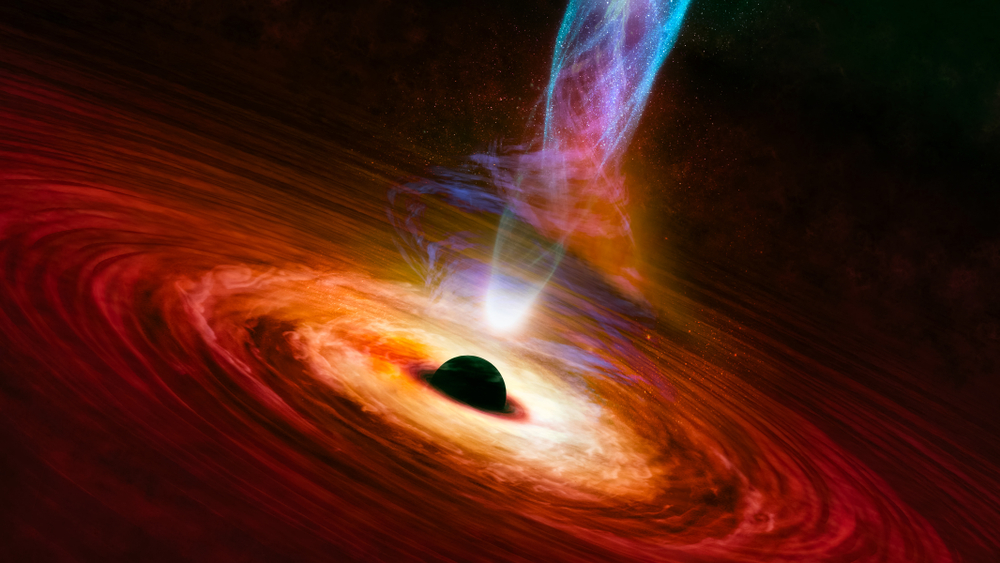The U.S. National Science Foundation is supporting a broad portfolio of research across the field of plasma science and engineering.
The U.S. National Science Foundation (NSF) describes the discipline of plasma physics as a study of matter and physical systems whose intrinsic properties are governed by collective interactions of large ensembles of free charged particles.¹ 99.9% of the visible Universe is thought to consist of plasmas. The underlying physics of the collective behaviour in plasmas has applications to space physics and astrophysics, materials science, applied mathematics, fusion science, accelerator science, and many branches of engineering.
This description of the discipline has served as the defining guidepost of the Plasma Physics program within the NSF Division of Physics for the past decade. The broader field of Plasma Science and Engineering (PSE) was most recently reviewed in 2021 by the National Academies of Sciences, Engineering, and Medicine (NASEM) in the Decadal Assessment of Plasma Science,² ‘Plasma Science: Enabling Technology, Sustainability, Security, and Exploration’. PSE encompasses many of the nominally distinct disciplines where the knowledge of the physics of plasmas is critical to understanding the Universe as we know it, and to developing new technologies that rely on plasma’s unique properties. In the US, many of these are supported by dedicated programs within NSF and other federal science agencies.
The study of collective interactions in complex, many-body, nonequilibrium systems is not unique to plasmas. In fact, one could argue that a plasma where electromagnetic forces dominate the collective interactions is one of the simplest examples of such a system. A recent NSF-funded workshop,³ Working Across Scales in Complex Systems, explored parallels between plasma physics and biological physics in their study of multiscale nonequilibrium phenomena. Condensed matter physics and quantum information science study systems where quantum interactions determine their statistical nonequilibrium properties,⁴ and many social institutions, such as democracy itself ,⁵ are examples of complex nonequilibrium systems defined by human interactions.
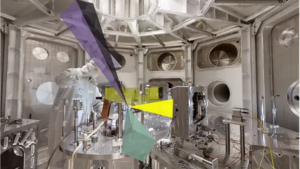 The P3 (Plasma Physics Platform)-installation at ELI Beamlines where the experiments will take place. Credit: ELI Beamlines
The P3 (Plasma Physics Platform)-installation at ELI Beamlines where the experiments will take place. Credit: ELI Beamlines
Many of the plasma physics, and broader PSE projects, and authors featured in The Innovation Platform articles over the past year have been supported by NSF.
The article by Edda Gschwendtner, ‘Unlocking high-energy electron acceleration proton-drive plasma technology’, describes the CERN-based Advanced Proton Driven Plasma Wakefield Acceleration Experiment project to advance plasma wakefield acceleration – an international effort where the US contribution by the University of Wisconsin-Madison has been supported by NSF for nearly a decade. Gschwendtner’s article also refers to strong-field quantum electrodynamics, a topic expounded upon, from the basics to the state of the art, by the University of Maryland’s Wendell Hill in this issue’s article, ‘Rousing the quantum vacuum with extreme laser light’. Bringing together the physics of electromagnetic waves, special relativity and quantum mechanics, Hill describes upcoming virtual matter experiments aiming towards creating electron-positron pair plasmas out of vacuum at some of the world’s highest power laser facilities, such as the newly constructed 3 petawatt (PW) NSF Zettawatt-Equivalent Ultrashort pulse laser System facility at the University of Michigan. Hill is also engaged in a project aiming to build the next-generation multi-beam high-field laser user facility with two 25 PW beamlines, NSF OPAL, which is currently in the design phase, being led by the University of Rochester.⁶
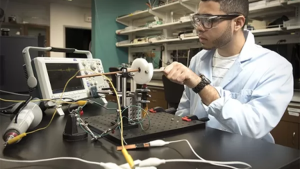 Researcher Federico Hita fine-tunes a hand-cranked piezoelectric device developed to generate plasma
Researcher Federico Hita fine-tunes a hand-cranked piezoelectric device developed to generate plasma
Credit: University of Notre Dame
Low-temperature plasma science
Dialing back the electron energy by 10 orders of magnitude from ~10 GeV to ~1 eV, two articles by NSF-supported principal investigators — ‘Low-temperature plasma science and engineering enable a broad range of societal transformations’, by Peter Bruggeman at the University of Minnesota and, in this issue, ‘Tackling the grand challenges of engineering with plasma science’, by Katharina Stapelmann at North Carolina State University — describe the impact of low-temperature plasma science in life sciences, agriculture, sustainable chemistry, environment and next-generation manufacturing. The advances described in these articles have become possible, in large part, by bringing the knowledge of nonequilibrium plasma physics and chemistry to bear on many of the technological and societal challenges of the modern world. To help enable such efforts, encouraged by the 2021 NASEM Decadal Assessment of Plasma Science, NSF established an umbrella program, ECosystem for Leading Innovation in Plasma Science and Engineering (ECLIPSE), to breakdown disciplinary silos and to support translational research and workforce development at the interface of fundamental plasma science and technological innovation.
Plasma astrophysics
Laboratory plasma astrophysics has been a mainstay of the NSF plasma physics portfolio for decades. In this issue’s overview article, ‘Welcome to the world of laboratory astrophysics’, Thomas White at the University of Nevada, Reno describes how laboratory astrophysics uses advanced techniques to simulate and study extreme cosmic conditions in a laboratory. White’s article focuses on the study of plasmas in the high energy density regime at large laser facilities and his research group’s area of expertise recently highlighted by NSF. However, this area of study is broader and includes many individual-investigator-scale laboratory experiments, such as the NSF-funded work by Paul Bellan’s group at Caltech simulating solar flares on a scale size of a banana, and first-of-a-kind studies of plasma particles’ velocity distribution functions during magnetic reconnection at West Virginia University’s PHASMA experiment that help to understand the drivers of space weather.
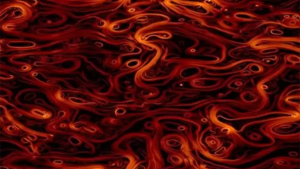 Astronomers find hot, turbulent plasma at the center of galaxy clusters Credit: Giannandrea Inchingolo
Astronomers find hot, turbulent plasma at the center of galaxy clusters Credit: Giannandrea Inchingolo
NSF’s support for plasma science research is by no means limited to laboratory experimentation. The world’s most powerful solar telescope, the NSF Daniel K. Inouye Solar Telescope, managed by the National Solar Observatory, is now capable of measuring magnetic fields within the plasma of the Sun’s atmospheric corona, a breakthrough that allows for closer study of the fundamental mechanisms that drive space weather. And the Event Horizon Telescope has measured signatures of magnetic field embedded in the plasma swirling at the edge of supermassive black holes M87⁷ and the Milky Way’s own Sgr A* ,⁸ enabling exploration of what has become known as the ‘extreme’ highly relativistic plasma physics of these astrophysical environments.
 Daniel K. Inouye Solar Telescope in Haleakalā, Maui. Credit: NSO/AURA/NSF
Daniel K. Inouye Solar Telescope in Haleakalā, Maui. Credit: NSO/AURA/NSF
Computational modelling of plasmas
An integral part of NSF’s plasma science portfolio is support for computational modelling of plasmas across the full energy range; from the low-temperature laboratory plasmas to geospace plasmas, to the extreme relativistic astrophysical plasmas. Computational modelling has been recognised as an essential tool for unraveling the complex, multiscale, nonlinear behaviour of plasmas since the advent of high-performance computing (HPC).⁹ It serves as the critical linchpin for interpreting the observed plasma phenomena from first principles, for extrapolating results of lab-based experiments to geospace and astrophysical systems, and for scaling early conceptual designs to prototypes and beyond for highly engineered systems such as the plasma wakefield particle accelerators.
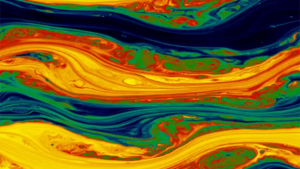 Plasma physics could explain the origins of the Universe’s magnetic fields Credit: Giannandrea Inchingolo
Plasma physics could explain the origins of the Universe’s magnetic fields Credit: Giannandrea Inchingolo
One topical area in plasma physics where computational approaches have been indispensable is the study of plasma turbulence. From the work on the origins of magnetic fields in the Universe by a Massachusetts Institute of Technology group led by Nuno Loureiro, to the study of plasma dynamics in the interstellar medium using NSF Advanced Cyberinfrastructure Coordination Ecosystem: Services and Support HPC resources by a University of Wisconsin–Madison group led by Paul Terry and Ellen Zweibel, concurrent advances in the HPC hardware and software have enabled dramatic progress in the understanding of the physics of plasma turbulence and its observable consequences.
Another focus area that critically depends on advances in computational plasma physics is space weather modelling. The joint NSF-NASA program on Space Weather with Quantified Uncertainties has enabled rapid progress in the development of state-of-the-art space weather software by bringing together teams with expertise across multiple scientific domains and research laboratories, while better understanding of the physics of space weather drivers is being pursued by NSF-funded researchers such as Luca Comisso and Lorenzo Sironi at Columbia University using computer models to explain the origins of high-energy solar particles.
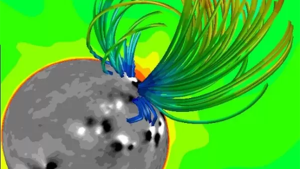 Space weather modeling framework simulation of the September 10, 2014, coronal mass ejection. Credit: Gabor Toth
Space weather modeling framework simulation of the September 10, 2014, coronal mass ejection. Credit: Gabor Toth
The breadth and reach of plasma physics as a discipline, and of plasma science and engineering programs across NSF and partner agencies, is second to none. Since 2022, these often disparate scientific communities have been brought together at bi-annual ECLIPSE meetings, where many of the aforementioned scientists have had a chance to present their work and learn from each other. The next 2026 ECLIPSE meeting is scheduled to take place in Ann Arbor, Michigan, to be hosted by the University of Michigan.
References
- See program description for the NSF Plasma Physics program:
https://www.nsf.gov/funding/opportunities/plasma-physics - National Academies of Sciences, Engineering, and Medicine. 2021. Plasma Science: Enabling Technology, Sustainability, Security, and Exploration. Washington, DC: The National Academies Press.
https://doi.org/10.17226/25802 - See NSF workshop Award Abstract: https://www.nsf.gov/awardsearch/showAward?AWD_ID=2308017
- See Nature Collection: Quantum Many-Body Dynamics,
https://www.nature.com/collections/beeegjcabc - K Wiesner, et al. 2019. Stability of democracies: a complex systems perspective. European Journal of Physics 40, 014002.
https://doi.org/10.1088/1361-6404/aaeb4d. - Those interested in joining the Friends of NSF OPAL Community can do so at https://nsf-opal.rochester.edu/contact/
- The Event Horizon Telescope Collaboration et al. 2021. First M87 Event Horizon Telescope Results. VIII. Magnetic Field Structure near The Event Horizon. The Astrophysical Journal Letters 910, L13.
https://doi.org/10.3847/2041-8213/abe4de - The Event Horizon Telescope Collaboration et al 2024. First Sagittarius A* Event Horizon Telescope Results. VIII. Physical Interpretation of the Polarized Ring. The Astrophysical Journal Letters 964, L26.
https://doi.org/10.3847/2041-8213/ad2df1 - J.M. Dawson, 1995. Computer modeling of plasma: Past, present, and future. Physics of Plasmas 2, 2189.
https://doi.org/10.1063/1.871304
Please note, this article will also appear in the 22nd edition of our quarterly publication.
